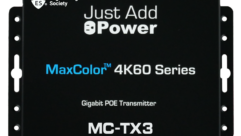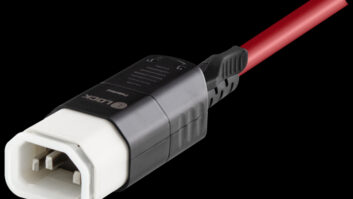Calculating Power Conditioning And UPS Size Requirements
1. Determine power consumption; 2. Add up amperages; 3. Convert to amps.
1. Determine power consumption.2. Add up amperages.3. Convert to amps.
There are two ways to determine the power consumption of an audio or video system component, computer-based editing system, console, or computer control:
A. Power consumption can be directly measured. Take measurements while the device is operating because modern electronic power supplies are non-linear energy consumers that require a true RMS current meter and current probe.
B. If measurement equipment isn’t readily accessible, check the product’s nameplate, usually located on its rear panel. Typically this data includes the device’s input voltage, input frequency, and input current. This data is usually provided for both North American and international electrical environments. It may also include power consumption in watts, VA (volt-amps), or both.
Nameplate data is usually moderately overstated, so one way to select an appropriately sized power conditioner is to select a model that provides at least as much current as is shown on the nameplate.
If multiple devices are being connected to the same power conditioner, then simply add the nameplate amperages, and select a power conditioner with the amperage total of all of the devices. Sometimes amperage isn’t stated, and power consumption is given only in VA. If this is the case, divide the VA by the operating voltage to determine the current. For example, a system with a VA rating of 360 VA operating at 120 volts would require 3 amps. If growth is anticipated, select the next larger sized conditioner.
Occasionally power consumption is shown only in watts, and neither VA nor amperage is available. Watts ratings are an expression of the “true” power consumed by a device, and are equal to the VA rating multiplied by the system’s power factor. Most electronic systems today operate at power factors of about 0.65 or 65 percent of the VA rating. If you encounter a system with a power rating shown only in watts, multiply the watt rating by 1.5 to arrive at the approximate VA rating, and then divide the VA rating by the voltage to arrive at the required amperage.
Manufacturers of uninterruptible power supplies (UPS) don’t usually rate their products in amps. UPS products are generally rated in VA, watts, or both. It’s preferable to select a UPS based on its VA capacity and the VA requirements of the system it will support because this eliminates the need to perform the amperage calculation. However, if selecting the UPS based only on the system’s watt rating is unavoidable, make sure that the UPS provides the wattage the load requires. Most UPS specifications provide the UPS capability in VA and watts. With a UPS, make sure to select a size that will allow for growth in the future.
Source: ETA Systems










